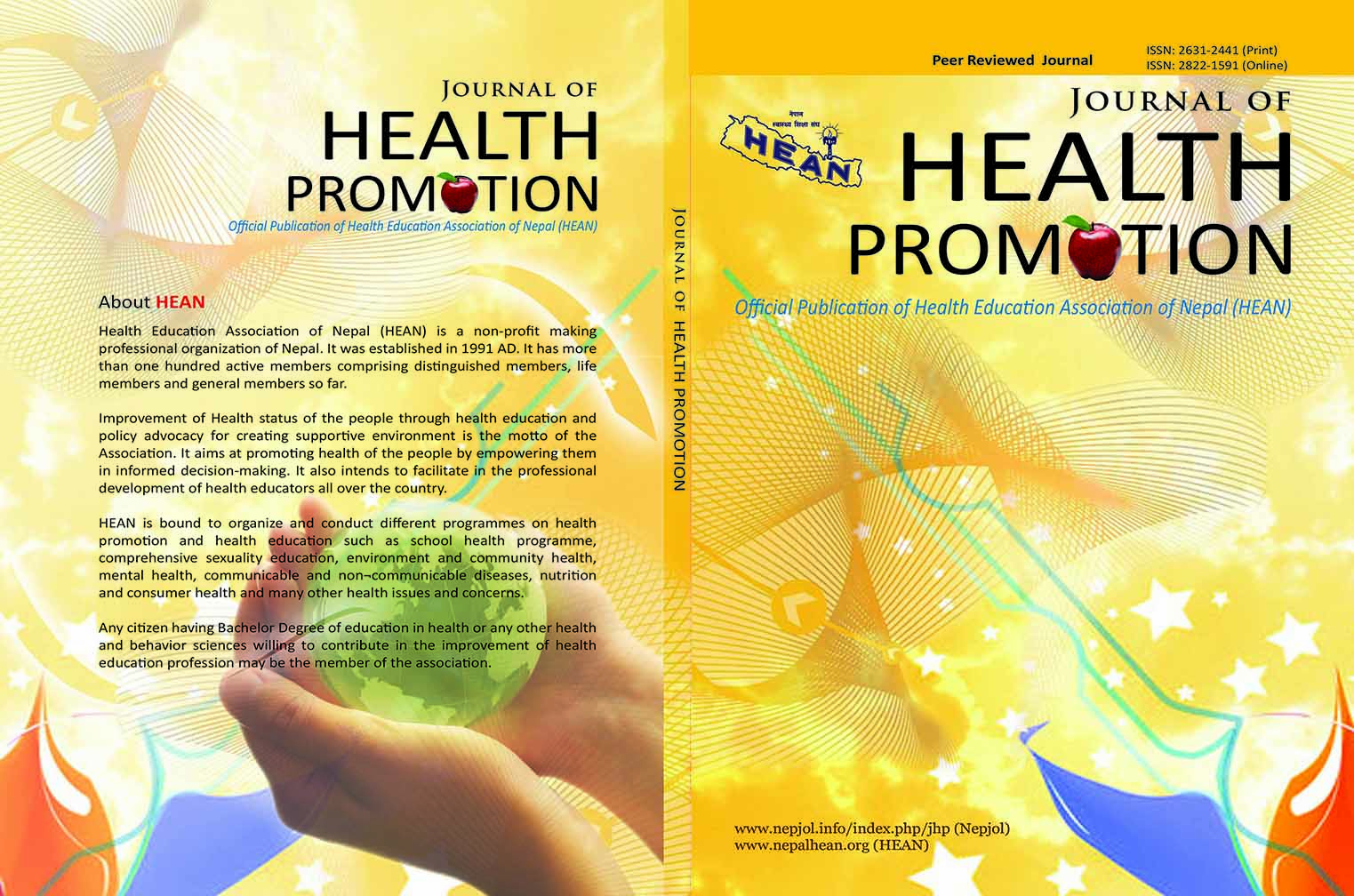Factors Associated with Early Marriage in Rural Mid-Western Nepal
DOI:
https://doi.org/10.3126/jhp.v8i0.32986Keywords:
early marriage, associated factors, sex, education, Rural communitiesAbstract
Early (or child) marriage is a global public health issue influenced by a complex web of factors including socio-demographic conditions of the people. The present paper aims to examine factors associated with early marriageamong the people in rural communities of Nepal. A cross-sectional end-line study was carried out among 155 married respondents selected through cluster cum convenience sampling from six clusters of two rural districts of Mid-western Nepal. The mean age at first marriage was 18.4 years (SD=3.83). Two-third of them had an early marriage and the proportion of early marriage was remarkably higher among women than men (77.8% vs. 42.6%). The prevalence of early marriage was the most common among those of women, age-group of 35-44 years, illiterate and basic literate ones, nuclear and small families, and Janajatis. Sex and educational status of the respondents had a statistically significant association with their marital age (p < 0.05) and were major factors associated with early marriage but other socio-demographic factors such as age, caste/ethnicity, family type, family size and source of income were notfound directlyassociated with early marriage for the sample. Future research efforts should prioritize gender-transformative interventions to recognize and confront inequitable gender norms and actions.
Downloads
Downloads
Published
How to Cite
Issue
Section
License
© Health Education Association of Nepal (HEAN)
Authors are required to transfer their copyright to the Health Education Association of Nepal (HEAN).
The materials of this publication may be reproduced, reviewed and translated, acknowledging the source "Journal of Health Promotion".




